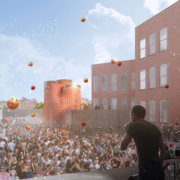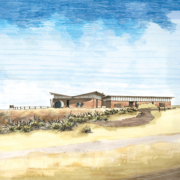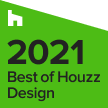What Does “Green” Mean?
by Maggie Flickinger
Net-Zero | Off-the-Grid | LEED | Living Building | PassivHaus | Cradle to Cradle | Greenbuilt | High Performance | 2030 Challenge | Regenerative Design
From within the sustainable design industry, there is difficulty defining “just what exactly does ‘green’ mean?” In the absence of a common standard, metrics of all types have been defined – with mixed success. If the profession itself has such varying methods, how does the general public perceive sustainable design? With an even greater level of confusion, according to the recent Green Living Pulse (GLP) survey – the largest study of green consumers in America.
Paradoxically, just as consumers are beginning to experience green fatigue, they are also unable to identify more than one green home feature without assistance. Essentially, according to GLP, green homes are still a vague concept for most consumers. This was eye-opening for me, and after opening the discussion via email to my Barrett Studio colleagues, we’ve realized that it is incumbent upon sustainable design professionals to acts as educators, or – recognizing that no one is the expert – as provocateurs spurring discussion on this complex issue.
This initial email created a flurry of responses within the studio – which are shared below as comments. Please, add your voice! As an educated consumer or someone just dipping their toes into sustainability, what does green mean to you?





















I think our concept of green might be more far-reaching than the general public’s, and, since we distinguish our work & philosophy as sustainable, environmental, green etc, our definition of what green etc. means should be one of the first pieces of information a potential client comes across. Recently, one of my longtime friends who has heard countless stories about what we do at BSa was totally confused when she figured out we haven’t done a LEED project. She said, so you actually don’t do green, sustainable, architecture? I realized I had always assumed she knew what I meant when I used these supposedly defining words, when she did not.
It would be interesting to have a discussion on what Bsa defines as green/sustainable/environmental via some sort of individual written definitions, or maybe a short lunch charrette. I would love to discuss this more as a group.
Laura,
I love your story about how green is perceived to be synonymous with LEED.
Quick Definitions:
Energy Efficient Design = Design that incorporates building systems and technologies that reduce energy use
Green/Sustainable Design = Energy Efficient Design + Responsible Materials and Resources
Living Architecture = Green/Sustainable Design + Site Responsiveness + Client Personality + Beauty
This is my off-the-cuff start that I would love to debate and elaborate on with the whole studio.
I still think the role of architecture can be to do all those “green things”, but more importantly somehow provide experiences that bring us (humanity) back into a sense of connection, or relatedness, that is the underpinning of WHY we live, and WHY we value the Earth, and WHY we must change or die (or lose Her). This is the meeting place of “Doing the right thing (deep green), and being smart (bright green), through true beauty where we are falling in love again. This seems like a shade of green that is truly Architectural…not merely architectural engineering.
Perhaps we should play off Nicole’s beginning definitions and create a larger sustainable/green dictionary with our own definitions? I would encourage us to also include information about who’s responsible. We as architects are responsible for informing clients of the possibilities (which means staying up to date and current) and specifying the materials and systems they are interested in using. Builders are responsible for installation and minimizing waste and such. Clients are responsible for maintaining and using the systems and materials to their fullest potential. I know this all seems obvious to us, but I think it’s worth expanding upon so clients realize that green and sustainable are lifestyle choices, not just pocketbook choices.
I think the active responsibility of the homeowner to operate responsively in the passive house is a great one! It’s not on auto pilot!
If I may join in. . . . Someone in our office always says “A Passive house requires an Active homeowner.” I always love that thought and phrase.
-Marc
In terms of what green is, I like the idea of accommodating – and even encouraging – regional variation. Tuning green building checklists and metrics to a locality seems daunting, but uncovers all types of opportunities that could be overlooked in a sweeping nationalized program. It also supports relocalization! I also think that there is a need for performance based feedback prior to finalizing any type of certification, and making these certifications more transparent to the public and less expensive administratively. Ultimately though, I think a lot of it comes down to one-on-one communication with the homeowner/building facilitator. If we design a thoughtful building with the environment at the forefront, and the user “buys in” to its optimized operation, certification seems like a needless afterthought to me.
I totally agree that Green Building programs / checklists should be tuned to the region / locale. At the same time, I believe there is strength in a program that has more national recognition so that there is less confusion in the marketplace about what Green is. I think it helps get us speaking a common language. A hybrid program is best. One with performance metrics built into it.
Totally agree that the programs need to figure out how to become less expensive administratively. The challenge is reducing the documentation and verification (administrative) effort without reducing the quality assurance that the certification represents.
The challenge that I see facing architecture firms who do thoughtful projects that would already exceed the standards of a certification program is to find a way to build this documentation in to the design and construction observation process, so it meets program requirements without adding extra work.
I think firms that are already doing a lot of construction observation, during and post construction performance testing with blower door and infra-red will find that they are already doing the had stuff and that after a project or two the other administrative tasks become a lot more stream lined.
Maybe need to get some of their own staff certified as a Green Rater in order to be recognized by Green Building programs to provide authorized on-site verification that things were done on -site as designed.
I believe Green Building certification programs are a step in the right direction to help create a standard which helps reduce Greenwashing. None are perfect, but they give the average person who does not have time to fully study Sustainability, a way to start making quick choices that follow best practices, and we need a lot more average people making different choices to have any hope of positive impact on the environment.
I like programs that are more holistic in scope. i.e. They focus on at least 5 broad categories and set a minimum threshold of achievement in each.
1. Energy Efficiency; 2. Resource Efficiency; 3. Indoor Environmental Quality; 4. Water Conservation; 5. Site and Community Impact.
I believe / agree that there are definitely elements of a well designed house or building that go beyond what a Green Building certification program can quantify. To David’s point, a well designed home or building can connect the occupant to the environment on a visceral level, stirring a love and desire to preserve Her that cannot be easily quantified by a Green Building program and checklist. I think that is the added value that architects (especially) bring to a project. However, I have felt that we can and should embrace the standards of a Holistic Green Building certification program as a baseline and then show how we go beyond that.
The Value of Certification. . .
(I believe) . . . . . . Certification Adds Value.
First of all, let me set the stage:
1. As a global society, we are on a trajectory to damage the global ecosystem to the point where we cannot easily survive.
2. Bottom line is we need the masses to make better choices in order to have the significant impact on the Global Ecosystem.
3. Whether we like it or not, virtually everyone is limited in their choices lack of money. It’s all relative. . . even the “Rich” have limits. Only a small percentage of people will make significant sustainable choices because they are morally compelled to do so.
4. We need to find a way to make choosing best practices economically advantageous. If we make this happen, then we are over the tipping point. The Global Ecosystem does not care WHY people choose best practices. . . just that they DO.
I see certain elements of human nature (competitiveness and a drive for self preservation) and our current socio-economic system (capitalistic) as being things not easily changed. Thus working within those “givens”, how to we get the masses to choose best practices that will help us preserve our Global Ecosystem?
I often do design for people that have limited budgets, and all too often their ability to choose more sustainable practices and products are limited by increased cost. I cannot count the number of times I hear questions like “What is the payback?” “Will my house be worth more?”, etc. etc.
I am frustrated that the marketplace does not currently value best practices enough so that your home is worth more. I believe the home is worth more but a home is only officially worth what someone is willing to pay for it, and what the real estate market says it is worth. . . enter Realtors and the Multiple Listing Services (MLS) and Appraisals and how banks and home financing works, building codes and the politics associated with building codes only being able to mandate a certain “lowest common denominator” level of quality in buildings, etc. etc.
I believe the best chance I / we have at making an impact on the masses is to have a recognized voluntary, standard, i.e. Green Building Certification, that says this house was designed and built to a higher standard. Then we track sales of these homes via the MLS to show that people are actually willing to pay more for certified homes. Research in some markets like the Northwest are already showing this is working.
With this kind of MLS data, I believe we can demonstrate to our clients that “Yes, your home will be worth more if you choose these best practices.”
As this spreads across the country, I believe we will eventually get the attention of the Appraisal Institute and they will actually appraise homes for more money which makes that increased value more tangible and “liquid” since the whole financial industry recognizes official home appraisals. Hopefully we will eventually have enough health and building durability data that will enable insurance companies to offer preferred rates for health and homeowner insurance for people with certified homes. . . One more way certification adds value in a direct, tangible, financial way.
This all helps spread knowledge of best practices and drives demand for better materials, which all lowers the cost, making it easier to choose those best practices, and the system continues to build upon itself.
In all of this, I do not see any easy row to hoe, and I am always open to a better idea, but so far I have not heard one that seems to have a greater potential for success.
Even if this all does not play out to its fullest extent, I do not see a lot of risk in promoting certification, and again, I am encouraged by some parts of the U.S. that are already showing signs that it is working.
Love the story. Green is something that is very important to me as I hope that we are heading in the right direction of cleaner, and more sustainable types of energy.